|
I gotta say, I love dancing Nia. I think you all knew that already. And! And it gives me so much joy to find other movement and dance practices too and try them on. On Friday night I went to a Dancing Mindfulness class at a new-to-me yoga studio called YogaQuest. Two other Nia friends came along and as we entered the space I felt that bit of nervousness of being the newbie in a situation. My review of the evening in a nutshell--Dancing mindfulness is awesome! So good for your mind, body and spirit, and when you meet new people, learn about a new practice and move your body to great music, joy increases! The photo above was taken at the end of class. We all grabbed a fun prop or toys from popular culture that YogaQuest has on hand to make movement/yoga fun. In the center, arms outstretched, is Jamie Marich the leader of our class and founder of Dancing Mindfulness. Jamie was a wonderful facilitator, laying out the practice at the beginning, sharing her geeky love of TV and Broadway musicals and excitedly prepping us for the great playlist she created for the class. She assured those who were new to dancing mindfully to have fun, to not judge ourselves or others and to enjoy the process. I was totally game, 'cause Nia is all about these same ideas.
One concept that she talked about in preparation to move was nonstriving. The word strive got my mental realm churning. To nonstrive I thought, would mean not to work hard or strive to do your best. A bit of confusion set in, why would I want to not strive? So interesting how hearing a word you know, but in a new context changes the way you understand it. The class started, the music was both new and familiar, the space had a great fun, open vibe and the group warmed up to each other and soon were singing, dancing, and moving with a whole lot of joy. I felt at home, it was like Nia free dance, Stages 1-3 for me. Jamie guided us to use our breath, to return to breath at some of the musical changes, to interact with others, go on a quest or hero's journey with our movement and to create a supportive circle of dance. It was wonderful! As the class ended I shared how I had been at a Dancing Mindfulness class in Champaign recently, had a great time and when I saw that Jamie, the founder would be in town I had to come and try a class with her. I purchased her book and in reading the introduction learned what I needed about the word nonstriving and how it related to my movement practice. "...nonstriving: thinking, feeling or acting with focus on the process, not the outcome. The name of this skill confuses many people because in Western culture we tend to associate nonstriving with giving up. Nonstriving does non imply laziness or sloth. Nonstriving is an attitude that encourages you, even in your work, to refrain from trying so hard. In nonstriving, we let whatever happens, happen." Beautiful words! How about you? Do you feel like your life or work is all about striving? Do your thoughts focus on reaching a certain end goal or destination? Or can you enjoy the process, the journey? This week I invite you to focus on nonstriving in class. We'll use our awareness of the base of our body, our foundation, to help us stay present and then let what happens, happen. See you in class! Dance, when you're broken open. Dance, if you've torn the bandage off. Dance in the middle of fighting. Dance in your blood. Dance when you are perfectly free. - Rumi
0 Comments
Falling in Love with Photographing Dancers (And Other Fruits of the Expressive Arts Journey)6/28/2016 Two birthdays ago, my husband David surprised me with a fancy Nikon camera. My first reaction was, “I don’t need something this nice, I don’t even know how to use it. Really, Honey, my camera phone will suffice.” In a classic case of my beloved knowing me better than I know myself, I discovered that this brilliant device ended up being a godsend in my Dancing Mindfulness work, particularly at our trainings and special events. I started really experimenting at the facilitator trainings. As others danced, I began pointing and clicking, capturing any image I could, knowing that I could pick out the decent ones later. During my first summer with the camera, I received a simple piece of instruction on photography from Thiago, my friend from Brazil. Thiago shared, “The key to photography is framing the image you want to shoot and then click away.” When she shared this piece of knowledge with me, I began seeing the world in beautiful frames and I found this process to be especially powerful when I took pictures of dancers. In playing around with photography, like a child learning how to use a new toy or a new piece of technology, I found myself needing to receive my own teaching that I share in facilitating Dancing Mindfulness. Trust the process. Don’t let judgment of your skill (or lack of skill) keep you from exploring what’s possible. Be a witness, not a judge. Embrace the chance to keep trying new things; you may surprise yourself with what you are capable of doing in the process. In contemplating how I’ve developed a real interest in photography inspired by my love of dance, I am awestruck, once again, by the beauty of expressive arts. By its nature, the field of expressive arts emphasizes the multi-modal fusion of creative processes to bring about healing experiences. To me, the real gift of this multi-modal process is when we can discover a passion for a practice we never found ourselves “good at” through one of our existing expressive practices. For me, that joy for taking photographs has directly flowed from listening to the fruitful messages of my Dancing Mindfulness practice. One of my favorite dancing sisters to photograph is the delightful Betsey Beckman. A formally trained ballet dancer who has channeled her talent into performance and a flourishing liturgical dance ministry, Betsey embodies joy, grace, and prayer in her movements. Recently, while on a pilgrimage to Bingen, Germany to study the path of St. Hildegard, I found that I couldn’t stop taking pictures of Betsey in many a dancing moment. There is a magical alchemy to her process that is so lovely to receive on film. One of our fellow pilgrims, Mary Beth Albers, a sculptor, thought so too. On Saturday afternoon when we had nothing formal scheduled, Mary Beth, Betsey and I engaged in an afternoon of creative play to take some photographs of Betsey for what Mary Beth envisions as sculptor celebrating the dancer’s journey. I jumped at the chance to take the photographs for Mary Beth’s project. After taking the pictures, our playful venture continued as Mary Beth and Betsey helped me to shoot a teaching video, and then I had the chance to film Betsey in an improvisational dance as Mary Beth held space. This afternoon experience was a delightful outing fused by the expressive arts. I see the act of supporting each other in our expressive art making a verdant pathway for bringing healing to the world… if we are adventurous enough to explore it! Thanks to Betsey for letting me share some of the pictures that I took of her on our afternoon outing in this blog as a slideshow. I look forward to seeing Mary Beth’s creation! 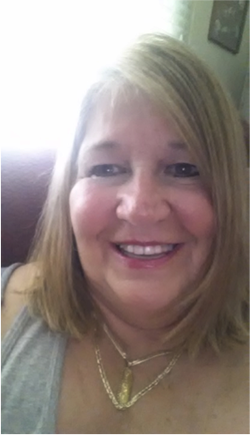 It is an honor to be named the Dancer of the Month for July 2015! Who would have thought that in just two short years this would be happening to me? No one would have - especially not me. I remember teaching my first solo Dancing Mindfulness class and how extremely nervous I was. I have presented in front of audiences of my peers and students many times in my life, so I was not sure about why I was so nervous. Maybe I was nervous because I wanted to be perfect. I wanted the class to be perfect. I wanted everyone to love the class. I wanted everyone to have a positive experience. I think that is because I love the fact that I know there is an opportunity to positively affect someone’s life in each and every Dancing Mindfulness class. The great thing about Dancing Mindfulness for me is that it has helped me fulfill my lifelong ambition of “helping people to help themselves.” We may not always hear about the ways that Dancing Mindfulness has had an effect on our students’ lives, but when we do, it makes it all worth it! For example here are a few success stories:
From evaluations from the classes I learned that students appreciated the following: the choice of music and inspirational messages; encouragement to be individually expressive/own style; found it relaxing, innovative music, no judgment about physical limitations, and some requested to have some specific steps/routines that can be incorporated. So, as my teaching of Dancing Mindfulness continues, I’ll remember all the good outcomes, add a few choreographed steps as appropriate, and hope that the healing continues for me and for all of the participants in Dancing Mindfulness. I was asked to write a couple of words of wisdom that have helped me with Dancing Mindfulness. In my attempt to do that I’ve come to the realization that it is not the words of wisdom that have helped me the most. I’ve found the feelings, emotions, actions, reactions, smiles, laughs and tears of both sorrow and joy have been the most inspiring pieces of wisdom that I’ve experienced. I’m not a wordsmith, nor can I recite lines from movies, books, or poems, but I have extreme empathy, emotions, and feelings. I try to understand those during preparation and execution of every Dancing Mindfulness class. It’s like on our tombstones there will be a birth year and a death year and in between them will be a dash. It’s important to understand that it’s not the dates that matter… it’s the dash. Pick your own path, live your own life, (even if it pisses off others), and be proud of yourself! Make the “dash” in your life be exemplary and include a “dash dance” in your next Dancing Mindfulness class! Make it memorable! Be open and learn to trust in your style! You will make a difference in someone’s life … know it in your heart! Thank you for the opportunity to share what little wisdom I have to offer now as I’m still learning as my dash continues--- I have been dancing my whole life. It was my whole world and I didn’t know any better. So, when I went to college, it made sense that I was going to major in it in college. There was a hint of interest in pursuing social work but it wasn’t enough to throw away my passion for dance. I did try to double major but both programs were so intense and set in their schedules so it wasn’t possible to do. Half way through college, my passion for dance started wilting and my heart began to feel emptier and emptier. I didn’t want that passion to die out but making your passion a career wasn’t as wonderful as I thought it would be. I got injured and had to continue dancing through the pain. After that I got depressed. Being told you weren’t dancing well enough and being graded for something that was supposed to be an interpretation of your soul, it just took its toll. I didn’t want to do it anymore. I was halfway through school so I didn’t want to quit. I didn’t want to turn back, so I pushed through, crawling broken to the finish line. I was a real mess during my senior year, but with the right help, I was able to graduate, cum laude, at the end of the year. The help I received from different social workers was tremendous. I was inspired. I wanted to do the same thing. I applied to the graduate school of social work on a whim. The July after I graduated, I found out I was accepted into the Graduate school of social work. I started that September and have found a new passion, a new love, a new career. After discovering all of this, I also re-found that passion for dance through dancing mindfulness. I learned how much of an outlet dancing can be for my emotions and for others’ emotions, so when I found out about the dancing mindfulness certificate, I jumped at the chance to complete the course. It was a beautiful experience and I am so honored to have participated in it.
My dancing mindfulness work was also immediately put to use in my agency. I work at a counseling center at Rutgers University, but we specifically work with victims of sexual assault, domestic violence, and stalking. Actually, that was one of my supervisor’s favorite parts during my interview, that fact that I danced and that I was going to pursue a certificate in dancing mindfulness. In any case, my agency held a 24 hour truce. It was based off of Andrea Dworken’s quote “I want one day or respite, one day off, on day in which no bodies are piled up, one day in which no agony is added to the old, and I am asking you to give it to me… I want a 24 hours truce during which there is no rape” (1984). So that’s what we did. We planned 24 hours of programming that talked about bystander intervention, project unbreakable, and had different art projects surrounding the notion of a world without violence. During the 24 hours, I held two dancing mindfulness sessions. The theme for the first session was a world with and without violence. I had about ten participants and they all participated fully and enjoyed their time. I asked them to paint the room with their bodies, showing and portraying what violence looks like. Then I had them wash it all off, cleansing the walls, their bodies, and their souls. They really enjoyed it. The next dancing mindfulness session was at 4:00am so I didn’t have many participants until the end. I played the song “break the chain” which Pink performed and a few of the staff knew the dance that was choreographed to it, so they began passionately dancing. I saw the hope in their eyes and the joy in their hearts. It was a great experience to be a part of. A friend of mine from grad school was talking about Dancing Mindfulness one day. When she was describing the concept I can remember thinking “Wow, that sounds like something I would really enjoy!” As soon as I got home that evening I went to the Mindful Ohio website to look up more information. The first thing I came across was the video showing others engaged in the practice. It was that very moment I knew I wanted to try a class. Funny enough, even though I desperately wanted to attend a class I was terrified. For a couple months I kept thinking “Ok, this is the week”, but sadly it was not.
In January 2014 I attended the Self-Care for Helping Professional workshop. It just so happened that Dancing Mindfulness was included in the day. I can vividly remember enjoying myself until “Wake Me Up” from Avicii was played. At that very moment I became incredibly overwhelmed by emotion. I did not fully understand what was happening to me. Before leaving that day I talked to Jamie about what I experienced. She was able to normalize the situation for me which gave me a great sense of comfort. Even though I was nervous about the same thing occurring again I started to regularly attended classes. There were many times when I did become quite emotional but I was able to accept that part of myself. In fact, I ended up downloading the Avicii song after the workshop and was able to work through feelings I had been holding on to for a long time. During a few of the classes Jamie talked about facilitator training. I knew the training was something I really wanted to do but again I began to put myself down. I talked to a variety of friends, family, and mentors and all of them encouraged me to sign-up. I decided to take their advice and it ended up being the best decision I had ever made. I truly believe that weekend changed my life and still impacts me in a positive way. The connection I had that weekend and continue to have with the other facilitators is something I cannot describe. The best explanation I can give is that connection you have with your best friend that you have known for years. There was another important piece of the weekend that let me know I was meant to be there at that moment. During our first “dance” as a group Jamie played a beautiful version of “Wake Me Up” by the cast of Glee. I remember smiling and thinking that song would be included in my first community class I facilitated. I knew that Dancing Mindfulness changed my life and I wanted others to have the same experience. I currently work as a Clinical Counselor and proposed the idea of adding a “Creative Movement” group (Creative Movement is Dancing Mindfulness just under a different name) for clients. The response I have gotten from other counselors at the agency has been amazing! My group jumped from one person to 8 people in a matter of two weeks! The clients have responded positively and tell me every week “Please do not take this group away.” Additionally, I had the opportunity to facilitate my first community class two weeks ago and of course “Wake Me Up” was on the playlist. I keep continuing to grow as participant and as a facilitator each week. If someone asked me what Dancing Mindfulness means to me I would have to use a line from “Wake Me Up”, which is “All this time I was trying to find myself and I didn’t know I was lost.” I truly was not aware just how much I needed Dancing Mindfulness in my life to reconnect with myself! When one year comes to an end and another begins, I am called to take an inventory of my blessings. The time of transition is perfect for this task. As 2014 becomes 2015, one major blessing warms my heart more beautifully than any other: Dancing Mindfulness. Although I am credited as the founder of the formal class-based practice, my gratitude is not that I developed it… quite the opposite. My heart brims with gratitude for those in my life who have taught me how to dance mindfully this year. When I developed the class-based practice in 2012, my original vision was for little separation between facilitators and dancers. I wanted to cultivate a true community where we are inspired to learn from each other. This vision truly came to fruition in 2014, and for that, I thank you!
In 2014, even though my team and I worked hard to offer seven live facilitator trainings across the U.S. and launch a distance-based program to those interested internationally in the practice, my most precious gratitude came when people shared with me how they are cultivating personal dance practices in their lives. To me, having a personal dancing mindfulness practice, just like we might have a personal yoga or sitting meditation practice, is a critical component of facilitator success. Of course, personal practices are open to everyone! My heart radiated as I heard people share with me stories of going to beaches and public places with their iPod docks, blasting music, and letting the dance of now cultivate mindfulness and its attitudes. My heart sang as I heard tales of people carving out personal spaces in their house to take a mindful journey, and sharing the attitudes and elements of dancing mindfulness with their children during play. My heart wept with tears of such pure joy when we were in Puerto Rico a month ago. My team’s mission for this trip was to train a group of 10 local women in Puerto Rico as facilitators. Yet during the practice class, as these trainees moved so effortlessly and mindfully to the music of artists from their homeland and helped me to do the same, something became very clear to me. These women didn’t need me to teach them Dancing Mindfulness, these women are dancing mindfulness… in their hearts, in their souls, and in the beauty of their heritage that they so generously shared. In one beautiful moment at Centro Buen Pastor in Guaynabo (the location of our training/retreat), as we moved in the group practice and I listened to the women singing along around me, it struck me: Dancing Mindfulness belongs to all of us. It is a practice we can all access, even if we haven’t realized it yet. Dancing Mindfulness is not only a practice, but a way of life that makes sense to so many of us. For many of us Dancing Mindfulness offers a template for exploring, for moving past our zones of comfort. For others, to dance mindfully offers a path of liberation from the inside-the-box ways of practicing spirituality and meditation that so many of us feel pressured to accept. Whatever Dancing Mindfulness may mean to you, know that it belongs to you. I had the privilege of visiting with my dear friend and collaborator Mandy Hinkle a few days ago. Mandy went through the facilitator training program, although the birth of her beautiful daughter Sofia earlier this year became the major focus of her life. There is no doubt in my mind that Mandy is going to continue to do amazing things as both a yoga teacher and a Dancing Mindfulness facilitator in the coming years. Mandy shared with me that she sometimes gets down on herself because she doesn’t craft time to formally go into her yoga space at her house to practice Dancing Mindfulness, and getting to classes has been nearly impossible. Yet when we discussed this idea of dancing mindfulness as a way of life, something resonated. She shared that she does dance around the house, in her kitchen, moving from place-to-place; she dances with the radiant Sofia. The dancing offers her an anchor in joy, and that is perhaps the most vital part of what in means to practice dancing mindfulness…no matter how specifically you are practicing it. Some of the greatest moments I’ve experienced this year have also come in what people have shared with me online. People, either in my professional or circles of acquaintances or people who have stumbled onto our pages online, are becoming inspired to move. I had another one of those tear-filled, spiritual goose bump moments the other night when Andy, a professional psychologist friend of mine shared that even though he is an introvert who doesn’t dance, he is inspired to follow our leads and give organic movement a try, to simply respond to music that resonates with him. Andy wrote, “Dancing is always a good idea.” Dancing is always a good idea… for those of you who can embrace that and use it as a path to present-centered living, wonderful! Keep it up into 2015. For those of you who are scared of organic movement, like Andy identified… know that you can always start with your breath. That is the foundation of dancing mindfulness practice. Consider that your breath is part of a larger dance, and by connecting with that breath, you are connecting with the dance. Cultivate curiosity and see where it takes you in the new year. Maybe you’ll catch yourself moving along to a certain sound or piece of music that comes on…that’s your start. Just be in the moment with it and release judgment. The exhale is always available to you to release judgment. If you’ve had a horrible experience in the past with dance or if it’s a trigger to you in any way, feel free to reach out to us on the main Dancing Mindfulness facebook page…the community is here to offer you ideas for support. As 2015 unfolds, I look forward to connecting with all of you who dance mindfully. Whether you are formally part of one of our groups, or if , like Andy, you are inspired to experiment with your own personal explorations and wish to connect with us online…I honor your journey with dancing mindfully. Let’s make “dancing is always a good idea” our mantra for the new year! Dance on, Jamie Originally published on StartAgain Media
“Dance is the hidden language of the soul.” –Martha Graham How could I not love an experience that is tagged as “Ditch the workout, join the party?” Zumba® fitness, which claims to offer just that, is wildly popular, packing classes at gyms and studios around the western world. When I first heard about Zumba® several years ago, I was naturally very intrigued. I danced throughout my childhood, although as an adult, I was seeking a dance form that would not require a partner, contained minimal risk of injury, and promoted no expectations of perfection or precision. I popped into my first class in 2008 and could barely tolerate it; in fact, I left early. It bothered me that I had such a visceral reaction to being in a Zumba® class. I loved to ballroom dance, and there are so many elements of a Latin dance within the Zumba® structure. After several attempts to get through a single Zumba® class over the years it finally dawned on me that the structure is what I resent, especially at this stage of my life. There is something very unappealing to me about being lined up like soldiers falling in line, trying to keep up with a high-energy instructor. I have several good friends who teach Zumba® and emphasize that the point is not to keep up, but to “do your best” and “have fun.” Yet there always seems to be this implied goal of one day being able to keep up with the drill sergeant. As a trained dancer in several forms, including ice dancing, I’ve taken more than my share of dance classes where learning the foundational steps in order to create a beautiful work of art is the primary objective. Looking back on my younger days, it was the experience of dancing around the house with no particular aim, or going into my parents basement to dance out these magical stories flowing from my own creative self that most resonate with me. From my earliest days, freestyle was my calling! I appreciate this training as something that worked for me well in my youth. As an adult who has finally claimed my birthright to be myself, I’ve learned not to torture myself with precision in the pursuit of my personal art. So why would I subject myself to a dance class experience that drives me crazy? On the other side of this coin, there is my friend Brandy, who is well aware of my disdain for Zumba® and similar fall-in-line-behind-the-leader dance forms. Brandy has come to several of my Dancing Mindfulness classes over the last few years, and they are not really for her. One day she shared with me, “Why you can’t stand Zumba® is the reason I like it; you are given something specific to do. With Dancing Mindfulness, I’m lost when you tell me to find my own movement.” Her comment made me realize how our respective personalities gravitated to the dance practices that best fit us. Brandy is the first to tell you that, in life, she needs specific guidance; I am one who tends to take it into account but ultimately I’m the free-spirit blowing in the wind who follows my intuition more than my intellect. I am not insinuating that Brandy or those like her are somehow inferior to me for needing more directive and regimented approaches to life. On the contrary, there are times in my life when it would be easier if I could just fall in line, keep my mouth shut, and listen to directives. The nature of my personality has made it very difficult, for instance, to work for someone else. In 2008 I began working as an independent contractor, a vocational state that allows me to flourish. It would be extremely difficult and spirit crushing for me to return to taking direct order from others in one 40-hour-a-week setting, yet there are times when I wish I just could just change who I am for the sake of having a more routine life. And having that wish granted would be an insult to a value I regard so highly: genuineness. To quote the well-worn cliché, it takes all types to make the world go around. There are so many dance forms, variations of dance, other movement practices, and combinations to accommodate our diversity. It is not lost on me that some people shudder when they’re exposed to Dancing Mindfulness, a practice that is very free-form, go-with-the-flow, and somatically introspective the same way that I cringe during Zumba®. Your reaction to a certain dance form teaches you about yourself and it is a powerful lesson that you can tap into and use for your own growth at any time in your life. This reaction is an amazing gift, if you choose to see it that way. Even if you are blocking yourself off from dancing or moving altogether, therein lays an opportunity to compassionately, non-judgmentally ask yourself, “What is this really about?” What I call “dance personality” does not have to be a black-or-white distinction; such polarities are rarely optimal in life. Even though I have settled into my free form conscious dance practices as most genuine for me at this time in my life, and Brandy is best described as someone who dances best when there is structure involved, there are people who fall in the middle. In fact, my most recent attempt at Zumba® came last week when I went out to support Kelsey Evans, a Dancing Mindfulness facilitator who is also a registered Zumba® instructor. Kelsey teaches both Dancing Mindfulness and Zumba® and I wanted to take a class with her. It’s beautiful to see how Kelsey can resonate with both forms, a trait that I believe is indicative of her beautifully flexible and multi-faceted nature. Taking steps outside of one’s comfort zone is a value that I routinely teach in Dancing Mindfulness. I find it very important to practice what I preach by attending some classes in both dance forms and yoga styles that aren’t optimally me, while not judging myself too harshly or labeling myself as a failure if I can’t keep up or tolerate a whole class (physically or emotionally). What was interesting about this most recent Zumba® experience is that while I could keep up physically, it felt a lot harder to do so because I was being guided in movements that did not feel genuine in my body at a certain time (I often feel the same way in Vinyasa yoga classes). As a result, the class felt like it took forever and it was an exercise in torture as opposed to a fun experience. For me, with Dancing Mindfulness, I can be practicing for three hours and it feels like 20 minutes, or practicing for 20 minutes and it feels like three hours. Geneen Roth, one of my favorite writers on food and body image, routinely teaches that if you are engaging in movement just for the sake of working out, you are setting yourself up to fail. Rather, she advises that we find forms of exercise that we genuinely enjoy doing. For me, Dancing Mindfulness or other conscious dance forms fit the bill. Dancing Mindfulness is a practice that I can engage in where clock time stops. For people like Brandy it is Zumba®, for you it may be finding the dance in the flow of your Vinyasa practice, or challenging yourself to master steps on the ice or on a ballroom. Maybe for you, it’s a combination of these forms, and if so, that is beautiful! It is beautiful because it is you. Find the movement practice that is genuine for you and refrain from judging yourself if thoughts are creeping in about what you should be doing instead. Originally published on StartAgain Media
“It’s better to be a first-rate version of yourself than a second-rate version of someone else.” -Judy Garland Several of my friends and colleagues have active sitting meditation practices in either Buddhist traditions or the more secular spin-offs like mindfulness-based stress reduction (MBSR). When I hear them gush over the spiritual fruits of their chosen meditation practices and how such practices change their lives, I could get an inferiority complex or shame myself for resisting such discipline. Notice, I said could. Today, I chose not to. In recovery, I’ve learned that becoming something I’m not, even if there is the hope of some spiritual promise at the end, is not authentic (and incidentally enough, not very spiritual). Everything about me always longed for spiritual, not religious, connection, so being raised in two pretty rigidly religious churches came with its challenges (Dad was Evangelical, Mom was Protestant). In my rebellion after leaving their home, I sampled just about every spiritual/religious practice out there that resonated even slightly with my values. At one point I became a devout Catholic myself (engaging in many silent contemplative practices within Catholicism). Vipassana meditation and mindfulness entered my life through several clinical channels, and as a result, I pursued studying some of these traditions in their own right. At one point, I briefly worked with a Buddhist teacher. For many years, I’ve taught my clinical clients how to meditate and how to use mindfulness-informed interventions for wellness. To say that my spiritual identify is an “amalgamation” is the understatement of the year. Through my spiritual evolution, I have learned that sitting for hours on a cushion, contemplating contemplations, going on silent retreats, chanting repetitively, and thoroughly scanning my body parts while laying down is not how I achieve the spiritual harmony that I seek. Although I will engage in these practices when it seems genuine for me to do so, and I have nothing but respect for people who engage in these practices authentically, I’ll be frank—they don’t get me to that state of balance that I seek. Dancing, however, does. “But dancing isn’t meditation!” If you hold such protestations, it’s okay. I’ve heard them before. I am used to people with more traditional practices turning their noses up at me, and I have fielded my share of snide comments. I’ve heard people say things like, “Dancing Mindfulness is great, but as a way of carrying mindfulness into the world.” Although Dancing Mindfulness is a way to carry mindfulness into the world, for me, Dancing Mindfulness is so much more than that. Dancing is the crux of my mindfulness practice, just as sitting on a cushion for hours coming back to the moment with your head may be your foundation. And guess what? I’ve found that engaging in vigorous dance meditation allows me to come back to seated meditation with much more meaning, just as some people may need to engage in a vigorous asana yoga practice before they can deeply relax and quiet the mind. One of the criticisms that I’ve heard about Dancing Mindfulness, at least the incarnation of it that I’ve developed and teach is that the practice is too noisy, too lyrical. That we can dance mindfully to Madonna or Eminem as easily as we can to Kirtan or devotional chant offends many, yet it is genius to many. For me, it makes perfect sense to dance to high-energy music from a variety of genres in a meditative way where, if I catch my present-moment awareness wandering and judgment creeping in, I gently draw my attention back. Interestingly, I notice that the more I engage in this practice, the more comfortable I am with silence in my daily life. As a clinical counselor, silence is a skill that I have to use in my sessions with people. Allowing for silent spaces in the practice of therapy is when real change happens. I've found as an educator and lecturer that pacing and navigating the spaces between words and pauses is a skill vital to effectiveness. At a talk this past week, an attendee came up to me and said, “Thank you for your pacing. Thanks for not being afraid of silence.” I just about burst into tears when she shared this because of some criticisms I’ve faced about Dancing Mindfulness being “expressive” and not allowing for enough quiet. Yet it’s always made total sense to me that the more expressive and creative that I can be with my meditation practice, the more comfortable I become with quietness and stillness in my life and in my counseling/training vocation. I’ve found it comforting to learn that I am not alone in my experiences. Dr. Christine Caldwell (2014), director of the somatic psychology program at Naropa University in Boulder, CO recently coined a term called bodyfulness. Bodyfulness is achieved in practices like yoga, somatic experiencing, Qi Gong, dance, and other practices that add another dimension to the practice of mindfulness by more fully encouraging awareness of the body. Caldwell identifies what she terms anti-somatic bias in more traditional mindfulness practices, and saw a need for this new term. Reading that she too had experienced such bias was incredibly validating. I achieve mindful awareness and its fruits by engaging my body and letting it creatively flow. This truth clicked for me over several stays at one of our country’s popular yoga and health centers several years ago when I first discovered the genre of conscious dance. The discovery of conscious dance was one of the great gifts of my life. From those powerful retreats, I formally crafted and named Dancing Mindfulness as a legitimate mindfulness practice. Some people feel that with Dancing Mindfulness, I am pushing the boundaries of what constitutes mindfulness. I disagree with this assessment. The way I practice mindfulness simply cannot be confined by the traditional boundaries that several ancient schools of thought and more systematized secular programs like MBSR establish. For me, there are infinite combinations of ways to meditate and achieve mindfulness. Even Jon Kabat-Zinn, founder of MBSR, writes: “Meditation is any activity that helps us systematically regulate our attention and energy, thereby influencing and possibly transforming the quality of experience in service of realizing the full range of our humanity and of our relationship to others in the world (2003; 2011).” He and many other modern-day mindfulness scholars routinely teach that any human activity can be engaged in mindfully, whether that be yoga, walking, jogging, chopping wood, carrying water, or doing the laundry. Dance is not so frequently mentioned in these comments of “everything can be practiced mindfully.” Maybe I shouldn’t be surprised, considering that Western society, in the face of many liberal evolutions in value, still seems to be more emotionally, creatively, and sensually repressed than ever. I could go on and on with my feelings on this, but I don’t want to seem that I am forcing dance meditation on you, any more than I want you to force sitting meditation on me. There are so many paths home. Why limit ourselves to one? Why judge others if the path that resonates the best for them doesn’t meet your conceptualization of what mindfulness and meditation should be? Holly Rivera, one of our Dancing Mindfulness facilitators, has engaged in many traditional Buddhist practices for the last decade and continues to be involved with Buddhist spiritual communities. She recently shared a beautiful reflection that helped me to answer my own questions: I have definitely found that Dancing Mindfulness has helped my meditation practice. I can focus a lot better and find it easier to quiet my mind. I think that once you can learn to bring yourself back to the now regardless of surrounding, it makes it that much easier to focus when you don't have to work so hard to stay present. Every person is different and benefits differently from mindfulness. I find it unfair to judge one form of mindfulness "better" than another. This just leads to categorizing people as "good" or "bad" based on the way they are able to be mindful. Sounds a lot like when we would teach only memorization in school and called kids who were auditory or visual learners "stupid." In researching the experiences of Asian woman (both nuns and laywomen), Buddhist teacher Martine Batchelor (2013) concluded that the specific techniques of meditation used do not seem to matter as much as one’s sincerity in pursuing the Dharma. May we all move forward honoring each other’s sincerity in their chosen practice(s). REFERENCES Batchelor, M. (2013). Meditation and mindfulness. In J. M. G. Williams & J. Kabat-Zinn (Eds.), Mindfulness: Diverse perspectives on its meaning, origins, and applications (pp. 157-164). New York: Routledge/Taylor Francis. Bhikku, B. (2011). What does mindfulness really mean? A canonical perspective. Contemporary Buddhism, 12(1), 19-39. Caldwell, C. (2014). Mindfulness and bodyfulness: A new paradigm. The Journal of Contemplative Inquiry, 1(1), 77-96. Kabat-Zinn, J. (2003). Mindfulness-based interventions in context: Past, present, and future. Clinical Psychology: Science and Practice, 10(2), 144-156. Kabat-Zinn, J. (2011). Mindfulness for beginners: Reclaiming the present moment-and your life. Boulder, CO: Sounds True Books. Originally Published on StartAgain Media
“There are an infinite number of ways in which people suffer. Therefore, there must be an infinite number of ways in which Dharma is available to people.” -a 98-year old Chan Master, as shared with Jon Kabat-Zinn What images do you associate with the word mindfulness? Do you see a fit yogi sitting on a beach in a perfect lotus position, entranced by the surrounding calm? Or are you going to a picture of a saintly Buddhist monk, eyes closed, clutching his prayer beads? Maybe you’re seeing a large group of people gathered at a festival, chanting “Om” in unison. You might even picture someone taking deliberate steps through a garden maze, savoring each pace of a walking meditation. Here’s a new one to try out: Imagine a dance floor full of people. Picture a community of all shapes, sizes, and physical abilities discovering their individual body’s sense of dance through the simplest of rhythmic movements. A gathering of beings, getting down and grooving to every musical genre imaginable. A collection of souls, each with his or her own unique story to tell, having fun and being themselves in the moment, tapping in to the fullness of their human potential. This is dancing mindfulness. In modern Western cultures, we tend to be inhibited when it comes to dancing, fearing that if we don’t dance well, then we really shouldn’t be dancing, victims of the looks are everything mentality. In essence, there’s a whole lot of judging--of others but especially of ourselves--and not a lot of witnessing. What if those of us who have experienced the beauty of mindful practice could work with people to move in a non-judgmental way and stay present? Imagine the healing potential we can help people realize, whether we are working with them in community or clinical settings. Tapping into each individual’s potential for movement, creating beauty, and achieving mindful awareness is what defines a dancing mindfulness practice. Dancing mindfulness helps people in the modern era get back to some of what we lost along the way. Dancing Mindfulness is a wellness practice that grew from my own clinical experiences working with trauma and addiction. Dancing Mindfulness can be learned in a group class and practiced in community, as well as individually; experience in yoga, meditation, or dance is not required to practice. Participants are simply asked to come as they are with attitudes of open-mindedness. Structured classes begin with a facilitator gently leading participants through a series of breathing and body awareness exercises. Following a mindful stretch series, the facilitator leads participants up to their feet for letting go and dancing with the freedom one might tap into by simply turning on some music and dancing around their houses. Many participants find this practice, especially when supported by the energy of other practitioners who are also taking risks, a cathartic experience. Although some find themselves overwhelmed and intimidated, they are encouraged to just acknowledge their experience, without judgment, and can choose to opt out of a certain dance or use their breath and movement as vehicles for moving through the discomfort. Safety is imperative to Dancing Mindfulness practice—facilitators emphasize that no one ought ever feel forced to participate in any component of the practice. The primary attitudes cultivated by mindful practice, as identified by Kabat-Zinn (2011) in his synthesis of mindfulness study, are used as thematic guidelines in structuring classes: acceptance, beginner’s mind, letting go, non-judging, non-striving, patience, and trust. Any of these attitudes may be used as a thematic guide in choosing music for the class, or the facilitator may call upon a series of these attitudes in dancing with an element. The elements of Dancing Mindfulness are networks through which mindfulness can be practiced: breath, body, mind, spirit, sound, story, and fusion of all the elements. A facilitator may elect to start the class working with breath in silence, advising participants that when they use their bodies to come up to their feet and dance, their breaths are with them as a guiding force. Using breath to guide movement is a way, for example, to cultivate the attitude of trust. Each class seems to take on a life of its own, depending on the venue and the students. Some classes seem to naturally cause participants to connect more with other dancers, but this process is to never be forced for the sake of safety. Other classes seem to be focused on personal depth of exploration. Regardless of the form the class takes, we always end on the ground with safety and relaxation, connecting back with the breath, the heartbeat, and often some light chanting. Since the beginning of 2013, I’ve had the privilege of training 52 facilitators in the United States and Great Britain who expressed an interest in the growing practice and a willingness to share it in their communities. It delights me that each facilitator brings her own authenticity to the practice and that no two facilitators lead a Dancing Mindfulness practice in exactly the same way. In the following series of blogs, The Art of Dancing Mindfully, I will be exploring more facets of the Dancing Mindfulness practice and its manifestations in both the group and individual format. See my earlier StartAgain blog, “This is Why I Dance” for a personal reflection on my individualized Dancing Mindfulness practice. I will share a bit more of my own story with developing and taking the Dancing Mindfulness practice into the community, in addition to addressing some of the criticisms I’ve heard that Dancing Mindfulness “isn’t really mindfulness.” I will also share some reflections of other people who’ve benefitted from cultivating a personal and communal Dancing Mindfulness practice. If you’d like to read more about the practice and see some sample videos of how the practice plays out, please go to: www.dancingmindfulness.com. REFERENCE Kabat-Zinn, J. (2011). Mindfulness for beginners: Reclaiming the present moment-and your life. Boulder, CO: Sounds True Books. Originally published on StartAgain Media
“Dance, when you're broken open. Dance, if you've torn the bandage off. Dance in the middle of the fighting. Dance in your blood. Dance when you're perfectly free.” -Rumi Dancing is one of the many outlets that we, as helpers, healers, and people on the road of recovery have at our disposal for emotional cleansing. For me, it’s been the ultimate channel for self-care and burnout prevention. Let share a very personal story of how I experienced the benefits of mindfulness practice, specifically dancing mindfulness practice, to cope with a loss in my own life. Loss is a wound, a trauma, which needs healing attention like any other wound, especially losses that shake us to the cores of our being. When I had almost a decade sober, many years of practice as a trauma counselor, and a great deal of experience practicing yoga, I experienced a loss that, at the time, I thought could not be healed... all while I was expected to keep up a busy schedule working and teaching. Shortly after my first marriage ended, I reconnected with an old high school boyfriend, a dear figure from my past who I long regarded as the one who got away. We had a passionate, fiery love affair for the better part of a year, and everything in me really believed that some cosmic force was bringing each other back into our lives. The way I was able to open my heart up to him again surprised even me, so when he made it very clear to me that he could not commit to giving me what I wanted because he never saw himself getting married or having children, I was crushed. It was the ultimate case of two people who loved each other very deeply, but could not be together because of who we, respectively, were as people. The grief I experienced when this relationship crumbled was unlike any I had ever experienced; worse than any death, even worse than my divorce. At one point I feel into a very deep depressive episode that seriously got in the way of my ability to function in my work life. I remember using my support network a great deal during this period, being honest about my perceived professional impairment, and the support was imperative for getting me through—plus some much needed down time to just do the bare minimum of work and let myself grieve. Looking back at it now, I can clearly identify that my work with mindfulness practices, especially moving mindfulness meditations like yoga and dance, and even the simple practices like breath work helped me to ride out this loss and adapt to it without letting it destroy me. When the feelings came, I surfed the waves of emotion, breathing through my tears, making a commitment not to judge myself at any juncture for feeling what I was feeling. The dancing mindfulness I practiced, even prior to formally developing the Dancing Mindfulness practice helped me transform my grief into beauty, and from this I was able to move forward. In the spare room at my house, which once served as my ex-husband’s office, I committed to dancing each night in a mindful way, choosing music that helped me dig into the emotion and be with it. At times, I moved with silence or sat in silent contemplation, allowing a healing fusion to take place. Indeed, the easiest way out of the emotional storm was through it. I practiced letting go of that great love of my life, and as a result, the path was cleared and the heart was open for my current husband to come into my life. We share a passionate love and a complementary vision of life, a manifestation of the trust I developed in practicing mindfulness. As much as I believe in formal psychotherapy, I don’t think that anything could have helped me grieve the loss of that relationship as effectively as mindfulness practice did. |
Dr. Jamie MarichCurator of the Dancing Mindfulness expressive arts blog: a celebration of mindfully-inspired, multi-modal creativity Archives
September 2022
Categories
All
|
Contact |
Memberships & Affiliations |
|
Please direct all inquiries to:
[email protected] © Mindful Ohio & The Institute for Creative Mindfulness, 2021 Terms of Use Privacy Policy |
Dancing Mindfulness/The Institute for Creative Mindfulness is an organizational member of the International Association of Expressive Arts Therapists, the Dance First Association, and NALGAP: The Association of Gay, Lesbian, Bisexual, Transgender, Addiction Professionals and Their Allies; Dancing Mindfulness proudly partners with The Breathe Network and Y12SR: The Yoga of 12-Step Recovery in our shared missions.
|
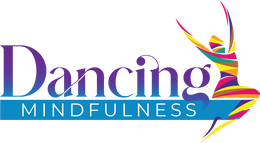
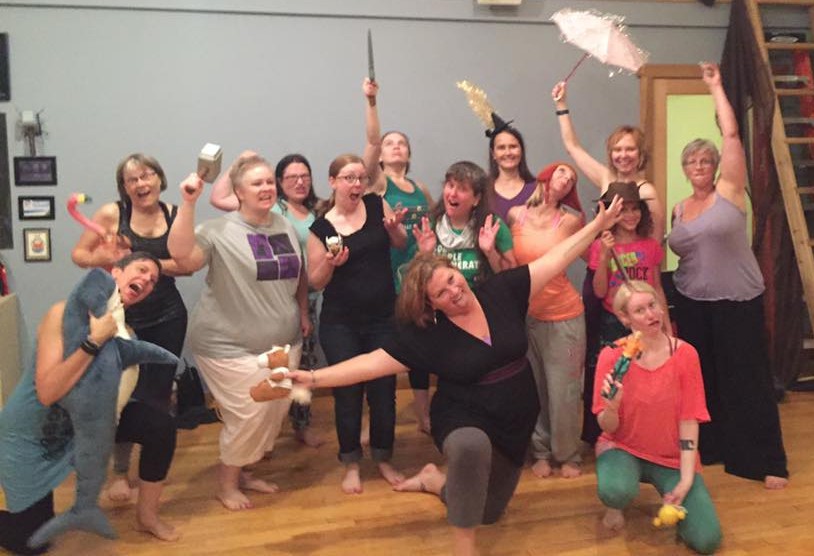
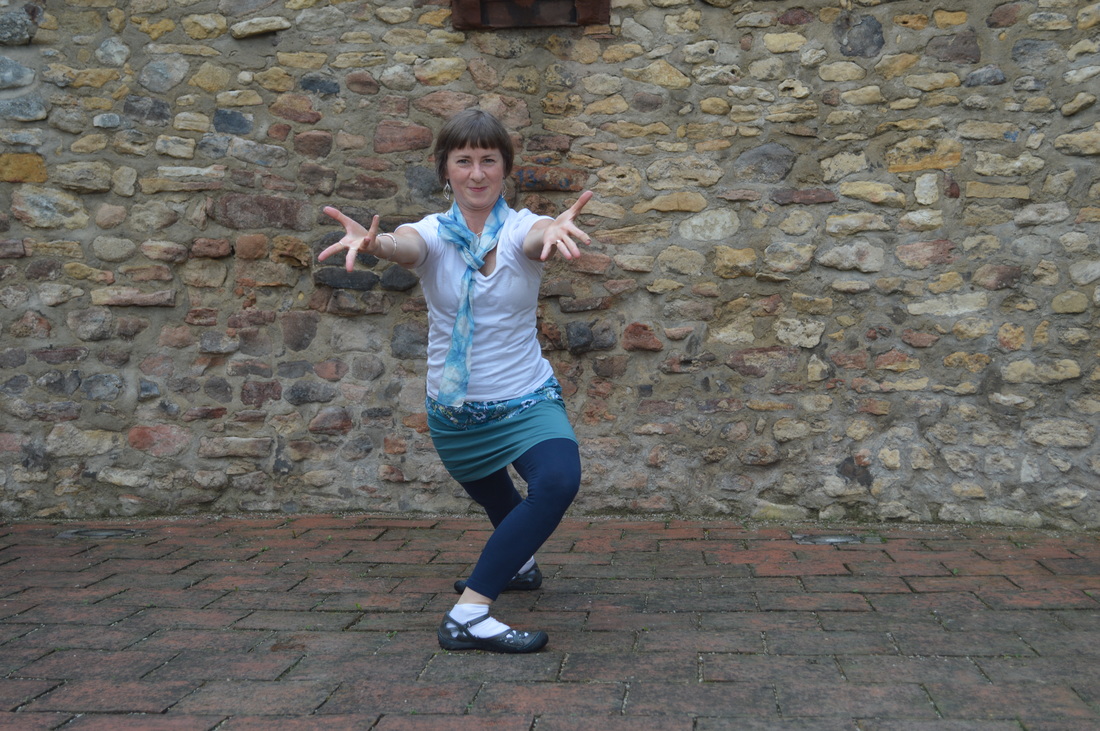
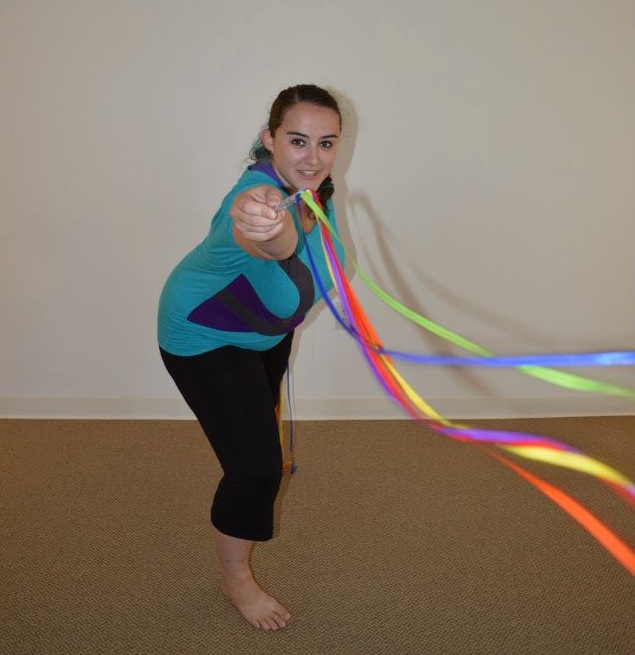
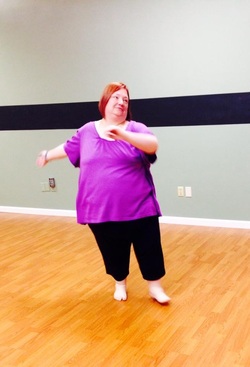
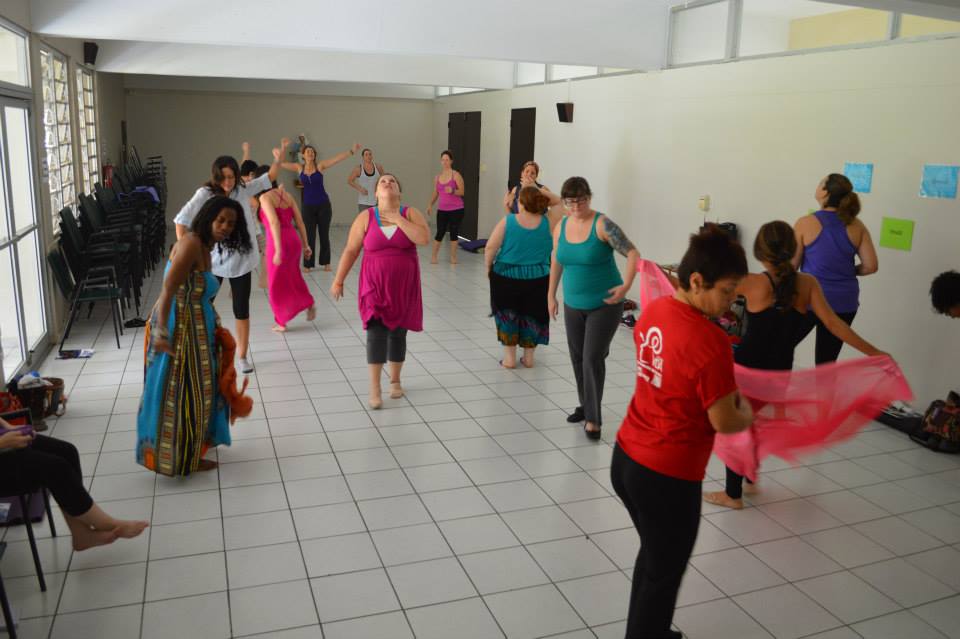
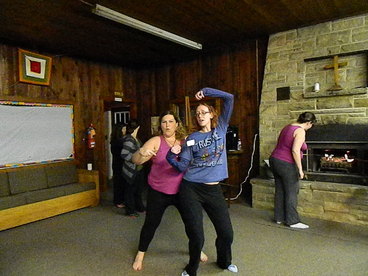
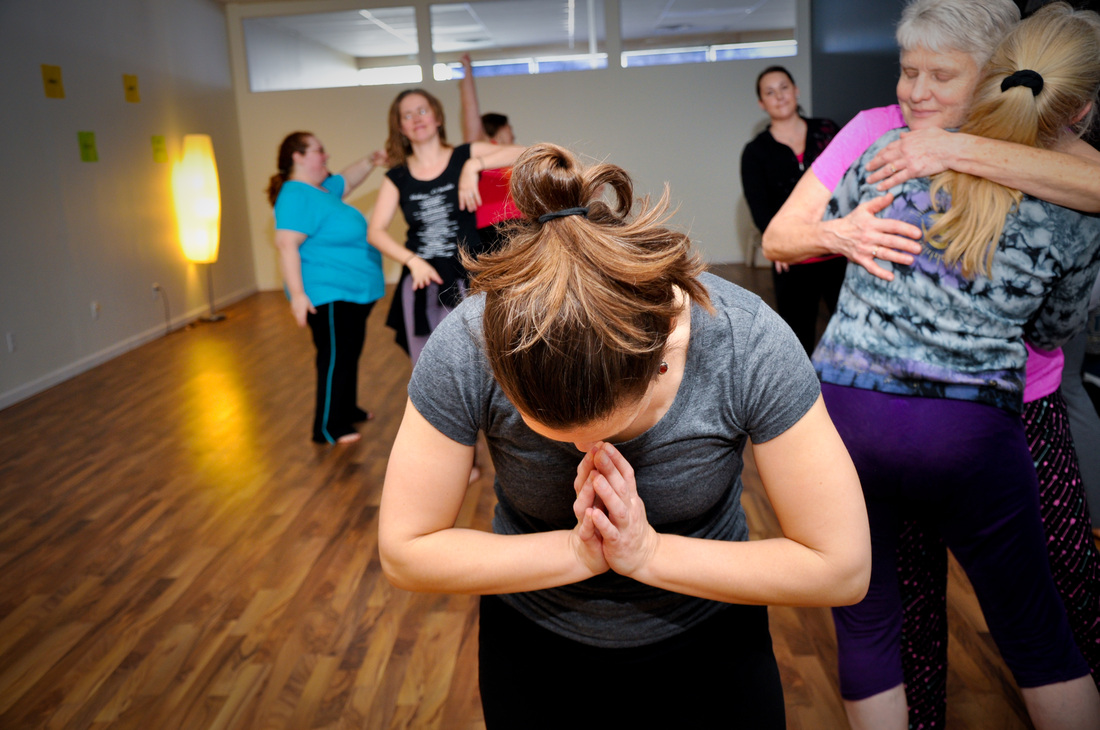
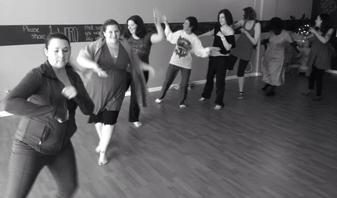
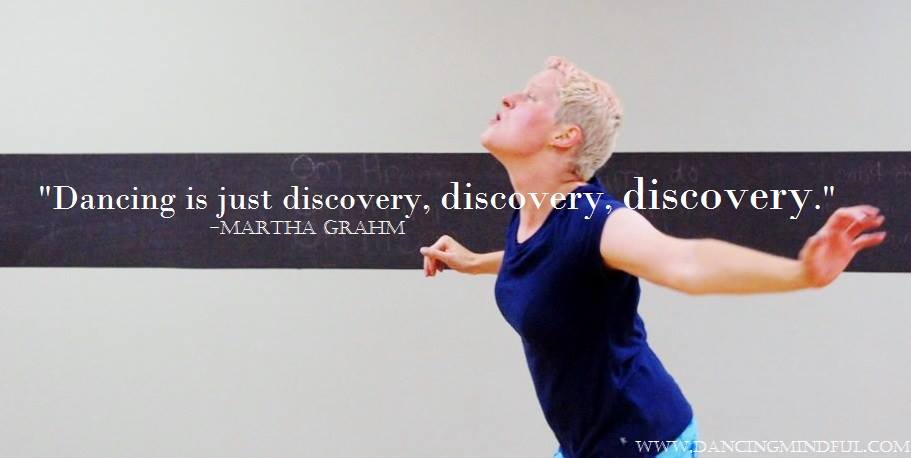
 RSS Feed
RSS Feed